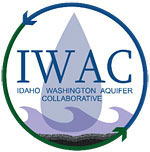Concerns about toxic chemicals in the environment continue to grow because these toxic chemicals are in products we buy and use every day – from household cleaners to yard products to durable goods. The risk from toxic chemicals doesn’t begin with just a leaking drum at an industrial site. It also begins when we buy and use products that contain toxic chemicals.
Many of these toxic chemicals end up in our aquatic systems, such as rivers, where they persist and travel up through the food chain, in some cases having ongoing impacts to humans and the environment. The most effective way of reducing the distribution of toxic chemicals in the environment is to reduce and eliminate their use and production.
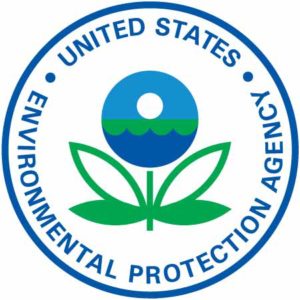 Drinking Water Contaminants – Standards and Regulations. The Environmental Protection Agency (EPA) identifies contaminants to regulate in drinking water. The Agency sets regulatory limits for the amounts of certain contaminants in water provided by public water systems. These contaminant standards are required by the Safe Drinking Water Act (SDWA). EPA protects public health by implementing the SDWA provisions while working with states, tribes, and many other partners.
Drinking Water Contaminants – Standards and Regulations. The Environmental Protection Agency (EPA) identifies contaminants to regulate in drinking water. The Agency sets regulatory limits for the amounts of certain contaminants in water provided by public water systems. These contaminant standards are required by the Safe Drinking Water Act (SDWA). EPA protects public health by implementing the SDWA provisions while working with states, tribes, and many other partners.
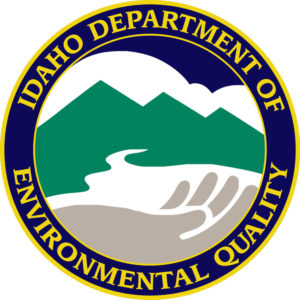 The Idaho Water Quality Standards Program is a joint effort between DEQ and EPA. DEQ is responsible for adopting and enforcing water quality standards that protect beneficial uses. EPA develops recommended criteria, regulations, policies, and guidance to help Idaho implement the Water Quality Standards Program and to ensure that Idaho’s adopted standards are consistent with the requirements of the Clean Water Act and relevant regulations. EPA has authority to review and approve or disapprove state standards and to promulgate federal water quality rules if it finds the state is not meeting the requirements of the Clean Water Act (such as the Idaho Bull Trout Rule).
The Idaho Water Quality Standards Program is a joint effort between DEQ and EPA. DEQ is responsible for adopting and enforcing water quality standards that protect beneficial uses. EPA develops recommended criteria, regulations, policies, and guidance to help Idaho implement the Water Quality Standards Program and to ensure that Idaho’s adopted standards are consistent with the requirements of the Clean Water Act and relevant regulations. EPA has authority to review and approve or disapprove state standards and to promulgate federal water quality rules if it finds the state is not meeting the requirements of the Clean Water Act (such as the Idaho Bull Trout Rule).
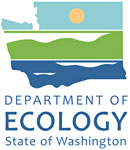 Washington State Department of Ecology’s Environmental Assessment Program Toxics Studies Unit monitors toxic chemicals in Washington’s environment. These scientific studies provide the foundation for decisions made by governing agencies to reduce the risk from these toxic chemicals of concern.
Washington State Department of Ecology’s Environmental Assessment Program Toxics Studies Unit monitors toxic chemicals in Washington’s environment. These scientific studies provide the foundation for decisions made by governing agencies to reduce the risk from these toxic chemicals of concern.
Long-Term Projects 1) Freshwater Fish Contaminant Monitoring Program samples fish and water across Washington to characterize levels of toxic contaminants and determine changes in levels over time. This project supports a range of agency activities, such as water-cleanup plans, by monitoring a broad range of toxic substances. 2)Persistent Bioaccumulative Toxics (PBT) Monitoring program conducts long-term studies to evaluate trends of environmental PBT levels over time. Ecology scientists analyze fish tissue, sediment cores, and suspended particulate matter for PBTs such as mercury, lead, and PAHs. This work supports agency Chemical Action Plans.
 Washington State Department of Health Office of Drinking Water. More than 5.5 million Washington State residents, 85 percent of the state’s population, get their drinking water from public water systems. Public water systems and their water works operators are our first line of defense against contaminants getting into our public water supply and people getting sick. For water system owners and operators. For consumer information, go to Drinking Water in Your Home.
Washington State Department of Health Office of Drinking Water. More than 5.5 million Washington State residents, 85 percent of the state’s population, get their drinking water from public water systems. Public water systems and their water works operators are our first line of defense against contaminants getting into our public water supply and people getting sick. For water system owners and operators. For consumer information, go to Drinking Water in Your Home.
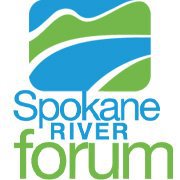 Assessing the Spokane River DO TMDL Karin Baldwin, Washington Department of Ecology; Chris Berger, Portland State University; Rich Sheibley, USGS Leading developer of the CE-QUAL-W2 model will provide an overview of the model and review update opportunities as part of DO TMDL assessment and monitoring activities. The USGS will explain the science of groundwater monitoring along Lake Spokane and provide some results from their 2015 study. SRF Conference Presentation 3-23-16
Assessing the Spokane River DO TMDL Karin Baldwin, Washington Department of Ecology; Chris Berger, Portland State University; Rich Sheibley, USGS Leading developer of the CE-QUAL-W2 model will provide an overview of the model and review update opportunities as part of DO TMDL assessment and monitoring activities. The USGS will explain the science of groundwater monitoring along Lake Spokane and provide some results from their 2015 study. SRF Conference Presentation 3-23-16
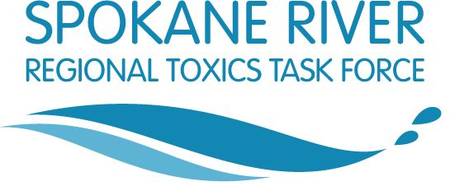 The Spokane River Regional Toxics Task Force (SRRTTF) leads efforts to find and reduce toxic compounds in the Spokane River. The goal of the task force is to develop a comprehensive plan to bring the Spokane River into compliance with water quality standards for PCBs (polychlorinated biphenyls). These pollutants exceed water quality standards in several segments of the river.
The Spokane River Regional Toxics Task Force (SRRTTF) leads efforts to find and reduce toxic compounds in the Spokane River. The goal of the task force is to develop a comprehensive plan to bring the Spokane River into compliance with water quality standards for PCBs (polychlorinated biphenyls). These pollutants exceed water quality standards in several segments of the river.
 2016 – Spokane River Regional Toxics Task Force: What’s Been Learned, Challenges and Planning for the Future Adriane Borgias, Washington Department of Ecology; David Dilks, LimnoTech; Lisa Rodenburg, Rutgers University; Brian Nickel, EPA Task Force Technical Consultant Limnotech will provide an overview of PCB studies conducted by the Task Force and how the results are informing the development of a Comprehensive Plan to address elevated PCB levels in Spokane River fish. National expert on inadvertent generation of PCBs, Lisa Rodenburg, will discuss the role of legacy PCBs vs. PCBs still produced as an inadvertent by product and entering the Spokane River. EPA will provide overview of response given to U.S. District Court requesting schedule for measuring and completion of work. SRF Conference presentation 3-24-16
2016 – Spokane River Regional Toxics Task Force: What’s Been Learned, Challenges and Planning for the Future Adriane Borgias, Washington Department of Ecology; David Dilks, LimnoTech; Lisa Rodenburg, Rutgers University; Brian Nickel, EPA Task Force Technical Consultant Limnotech will provide an overview of PCB studies conducted by the Task Force and how the results are informing the development of a Comprehensive Plan to address elevated PCB levels in Spokane River fish. National expert on inadvertent generation of PCBs, Lisa Rodenburg, will discuss the role of legacy PCBs vs. PCBs still produced as an inadvertent by product and entering the Spokane River. EPA will provide overview of response given to U.S. District Court requesting schedule for measuring and completion of work. SRF Conference presentation 3-24-16
 2016 – Greg Clark, Sources,Transport and Trends for Selected Trace Metals and Nutrients in the Coeur d’Alene and Spokane River Basins, Northern Idaho 1990-2013. Data collected at 18 streamflow-gaging and water-quality sampling sites in the Coeur d’Alene and Spokane River Basins of northern Idaho were used to estimate mean streamflow‑weighted concentrations and annual loads of total and dissolved cadmium, lead, and zinc, and total phosphorus (TP) and nitrogen (TN) for water years (WYs) 2009–13. Chronic Ambient Water Quality Criteria (AWQC) and AWQC ratios also were calculated to evaluate Idaho aquatic life criteria for chronic exposure to cadmium and zinc in streams. At four sites with a longer period of record, a Seasonal Kendall trend test was used to assess historical trends in the concentrations of total cadmium, lead, and zinc, and chronic AWQC ratios for cadmium and zinc during WYs 1990–2013. 2016 Spokane River Forum Presentation.
2016 – Greg Clark, Sources,Transport and Trends for Selected Trace Metals and Nutrients in the Coeur d’Alene and Spokane River Basins, Northern Idaho 1990-2013. Data collected at 18 streamflow-gaging and water-quality sampling sites in the Coeur d’Alene and Spokane River Basins of northern Idaho were used to estimate mean streamflow‑weighted concentrations and annual loads of total and dissolved cadmium, lead, and zinc, and total phosphorus (TP) and nitrogen (TN) for water years (WYs) 2009–13. Chronic Ambient Water Quality Criteria (AWQC) and AWQC ratios also were calculated to evaluate Idaho aquatic life criteria for chronic exposure to cadmium and zinc in streams. At four sites with a longer period of record, a Seasonal Kendall trend test was used to assess historical trends in the concentrations of total cadmium, lead, and zinc, and chronic AWQC ratios for cadmium and zinc during WYs 1990–2013. 2016 Spokane River Forum Presentation.
 2016 – Coeur d’Alene Lake Management Plan Science Update and Development of Idaho Spokane River Metals TMDL Jamie Brunner, Craig Cooper and Bob Steed, Idaho Department of Environmental Quality; Dale Chess, Coeur d’Alene Tribe Scientists working on water quality on the Idaho side of the Spokane River watershed will provide updates on trends in Coeur d’Alene Lake and upcoming activities on the Spokane River. Modeling and trends on the lake will be presented by limnologists from the Coeur d’Alene Tribe and IDEQ. Plans to develop a metals TMDL on the Spokane River will be highlighted by IDEQ staff. SRF Conference Presentation 3-23-16
2016 – Coeur d’Alene Lake Management Plan Science Update and Development of Idaho Spokane River Metals TMDL Jamie Brunner, Craig Cooper and Bob Steed, Idaho Department of Environmental Quality; Dale Chess, Coeur d’Alene Tribe Scientists working on water quality on the Idaho side of the Spokane River watershed will provide updates on trends in Coeur d’Alene Lake and upcoming activities on the Spokane River. Modeling and trends on the lake will be presented by limnologists from the Coeur d’Alene Tribe and IDEQ. Plans to develop a metals TMDL on the Spokane River will be highlighted by IDEQ staff. SRF Conference Presentation 3-23-16
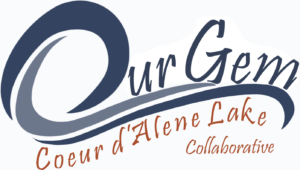 2014 – Our Gem Symposium Dr. Craig Cooper, IDEQ. A Hitchhiker’s Guide to Coeur d’Alene Lake Management. A Brief Look at 40 years of Progress in Coeur d’Alene Lake.
2014 – Our Gem Symposium Dr. Craig Cooper, IDEQ. A Hitchhiker’s Guide to Coeur d’Alene Lake Management. A Brief Look at 40 years of Progress in Coeur d’Alene Lake.
